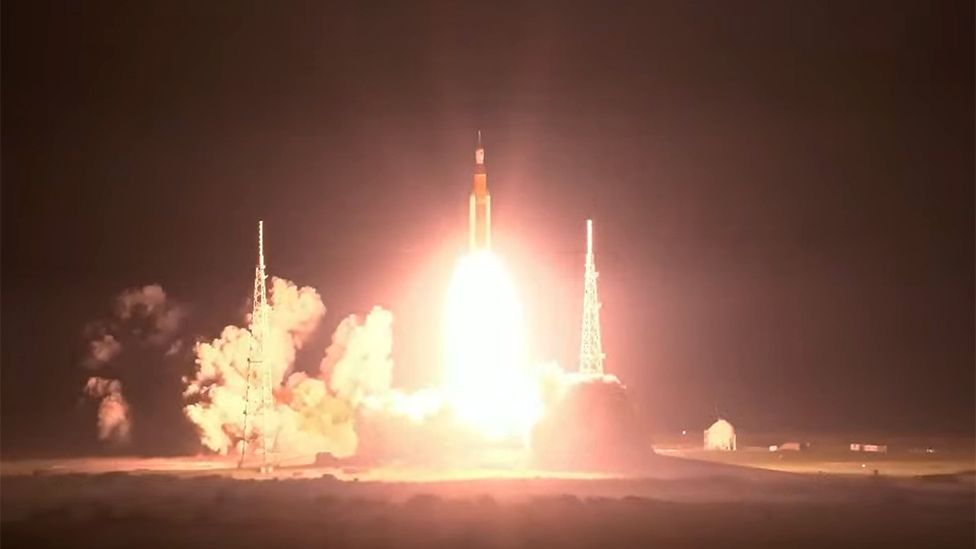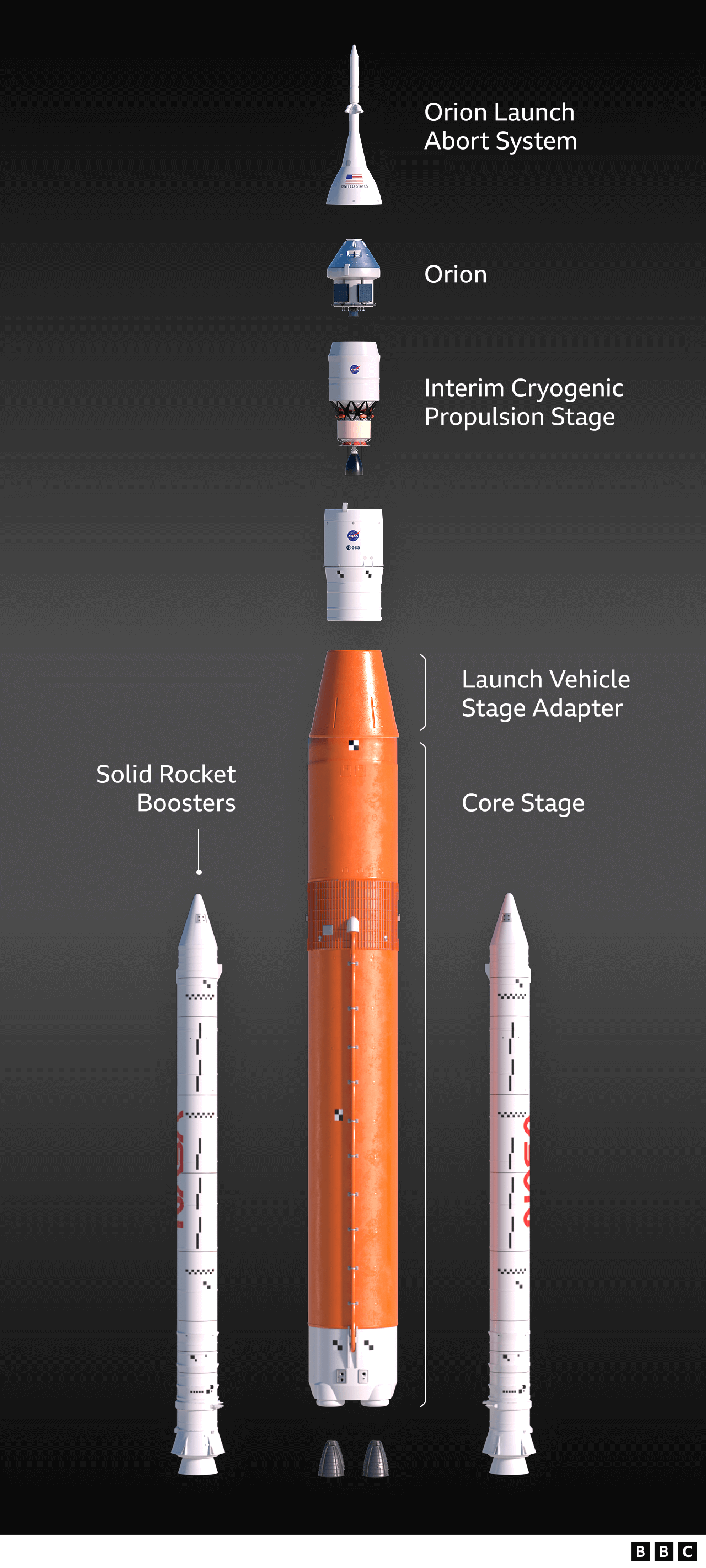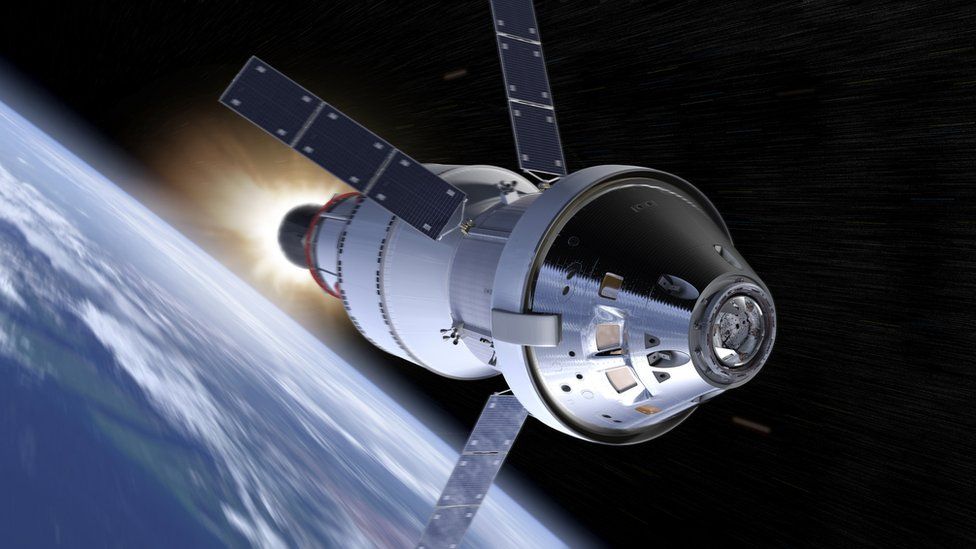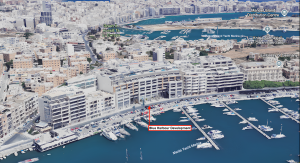 NASA
NASAThe American space agency Nasa has launched its biggest ever rocket from Cape Canaveral in Florida.
The 100m-tall Artemis vehicle climbed skyward in a stupendous mix of light and sound.
Its objective is to hurl an astronaut capsule in the direction of the Moon.
This spacecraft, known as Orion, is uncrewed for this particular flight, but if everything works as it should, people will climb aboard for future missions that go to the lunar surface.
Wednesday’s flight followed two previous launch attempts in August and September that were aborted during the countdown because of technical glitches.
But such issues were overcome on this occasion, and the Space Launch System, as the rocket is often called, was given the “go” to begin its ascent from the Kennedy Space Center at 01:47 local time (06:47 GMT).

The rocket has a number of important manoeuvres to perform high above the planet to get the Orion capsule on the right path to the Moon.
It will be a couple of hours after lift-off before we know whether these tasks have been completed correctly.
December will see Nasa celebrate the 50th anniversary of Apollo 17, the very last time humans walked on the Moon.
The space agency is calling its new programme Artemis (Apollo’s twin sister in Greek mythology).
It’s planning a series of ever more complex missions over the next decade that should result in a more sustained presence at Earth’s satellite, with the presence of surface habitats and the use of rovers, together with a mini space station in orbit around the Moon.

Orion is being sent on a 26-day excursion that will take it into what’s called a distant retrograde orbit at the Moon.
At its closest, the capsule will be a mere 100km from the lunar surface; at its most distant, Orion will be up to 70,000km from the surface.
The capsule is due back on Earth on 11 December – about three and a half weeks from now.
That’s when one of the key events in the whole mission occurs.
Engineers are most concerned to learn that Orion’s heatshield will cope with the extreme temperatures it will encounter on re-entry to our planet’s atmosphere.
The capsule will be coming in very fast – at 38,000km/h (24,000mph), or 32 times the speed of sound.
A shield on its underside must cope with temperatures approaching 3,000C.








